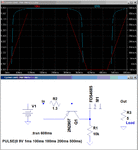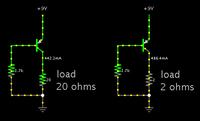Cval
Junior Member level 1
I am currently working on a project that requires some sort of current limiting circuit with minimized voltage drop. I have a 9V battery powering an electric motor that spins a wire. I want to limit the current draw to approx 0.5A, otherwise the wire over-torques and can break. I can’t change the motor or battery. Essentially I am trying to create an electric clutch that will “slip” or hold at a peak current I can specify (somewhere between 0.35-0.8A). Space is limited inside the housing.
The closest to what I am looking for is https://www.onsemi.com/pub_link/Collateral/NCP380-D.PDF but this is rated for a 5V Vin. I am a mechanical engineer by trade, so I’m a bit out of my element here. Any help would be appreciated.
The closest to what I am looking for is https://www.onsemi.com/pub_link/Collateral/NCP380-D.PDF but this is rated for a 5V Vin. I am a mechanical engineer by trade, so I’m a bit out of my element here. Any help would be appreciated.



